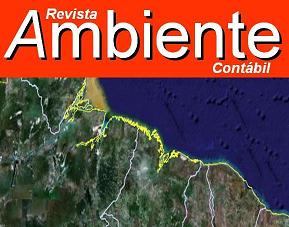UMA ANÁLISE SOBRE OS TRIBUTOS DIFERIDOS NO SETOR DE CONSTRUÇÃO CIVIL
DOI:
https://doi.org/10.21680/2176-9036.2018v10n2ID13661Palavras-chave:
Construtoras. Imposto Diferido. Imposto de Renda. CPC 32.Resumo
O presente artigo teve como objetivo analisar a adequação das práticas contábeis apresentadas pelas entidades do setor de construção civil às recomendações doutrinárias e normativas dos principais órgãos, bem como o impacto, em termos numéricos, dos tributos diferidos. Foram selecionadas 20 empresas construtoras atuantes, classificadas no ranking das maiores construtoras em termos de metros quadrados construídos, noticiadas pela revista Exame. Destamcam-se os itens: a) notas explicativas: b) auditoria externa; c) alíquotas; d) base normativa expressa; e) registro contábil; f) ativo diferido registrado; g) passivo diferido registrado. Como resultado apurou-se um consenso quanto às práticas contábeis empregadas – CPC 32. Quanto a relação ativo e passivo, registrou-se o diferimento mínimo, quando existente, de R$ 2.860.000,00 (apurado pela construtora Cyrela) representando 0,021%, e o maior valor de R$ 24.106.000 (apurado pelo Grupo Via Construtora). Por outro lado, no patamar máximo constatado, o ativo fiscal postergado assume 3,1% do ativo total registrado de R$ 754.208.000,00. Os patamares mínimos e máximos, 1,10% a 30,33%, do lado passivo, representam uma prorrogação contínua dos impostos e comprometem parte significativa do fluxo de caixa futuro.
Downloads
Referências
BEAVER, William F., DUKES, Roland E. Interperiod Tax Allocation: earnings expectations and the behavior of security prices. The Accounting Review, p. 320-322, Apr. 1972;
BRASIL. Comissão de Valores Mobiliários. Aprova o pronunciamento do IBRACON sobre a Contabilização do Imposto de Renda e da Contribuição Social. Deliberação CVM nº 273, de 20.08.1998.
BRASIL. Comissão de Valores Mobiliários. Aprova o pronunciamento do IBRACON sobre a Contabilização do Imposto de Renda e da Contribuição Social. Deliberação CVM nº 273, de 20.08.1998.
BRASIL. Comissão de Valores Mobiliários. Dispõe sobre o registro contábil do ativo fiscal diferido decorrente de diferenças temporárias e de prejuízos fiscais e base negativa de contribuição social. Instrução CVM nº 371, de 27.06.2002.
BRASIL. Conselho Federal de Contabilidade. Aprova a NBC T 19.2 0 Tributos sobre os lucros. Resolução CFC nº 998, de 21 de maio de 2004.
BRASIL. Secretaria da Receita Federal. Dispõe sobre o regulamento do imposto de renda. RIR/99. Disponível em: <http://www.planalto.gov.br/ccivil_03/decreto/d3000.htm>. Acesso em 06 nov. 2015.
CPC – COMITÊ DE PRONUNCIAMENTOS CONTÁBEIS. Pronunciamento de n. 32: Tributos sobre o Lucro. Disponível em: http://www.cpc.org.br. Acesso em: 18 out. 2015.
DANTAS, José Alves; RODRIGUES, Fernanda Fernandes; MENDES, Paulo César de Melo; NIYAMA, Jorge Katsumi. Normatização da contabilidade: princípio versus regras. In: NIYAMA, Jorge Katsumi (Org.). Teoria Avançada da Contabilidade. São Paulo: Atlas, 2014. p. 67-92.
FINANCIAL ACCOUNTING STANDARDS BOARD. Discussion memorandum acconting for income taxes. Stamford, Conn. FASB, 1983
HENDRIX, Eldon S., VAN BREDA, Michael F. Teoria da Contabilidade. Ed. Atlas. 1999;
IBRACON – INSTITUTO DOS AUDITORES INDEPENDENTES DO BRASIL. Contabilização do Imposto de Renda e da contribuição social. NPC IBRACON 25/98. Disponível em: <http://www.ibracon.com.br>. Acesso em: 15 nov. 2015.
IUDÍCIBUS, Sergio; MARTINS, Eliseu; GELBCKE, Ernesto R.; SANTOS, Ariovaldo dos.
Manual de Contabilidade societária: aplicável a todas as sociedades. São Paulo: Atlas, 2010.
KRONBAUER, Clóvis Antônio; SOUZA, Marcos Antônio; WEBBER, Fabiano Lima; OTT, Ernani. Impacto do Reconhecimento de Ativos Fiscais Diferidos na Estrutura Financeira e no Desempenho Econômico de Empresas Brasileiras. Revista Contemporânea de Contabilidade. UFSC, Florianópolis, v.9, n.17, p.39-60, jan./jun., 2012.
LOPES, Magui dos Anjos. Os Impostos Diferidos no Balanço: Estudo de Caso. Dissertação (Mestrado em Contabilidade e Finanças), Instituto Politécnico de Bragança – IPB/APNOR, 2014.
MEDEIROS, João Bosco. Redação Científica: a prática de fichamentos, resumos, resenhas. 8. ed. São Paulo: Atlas, 2006.
NIYAMA, Jorge Katsumi; SILVA, César Augusto Tibúrcio. Teoria da Contabilidade. 2. ed. São Paulo: Atlas, 2011
OLIVEIRA, Luís Martins de; CHIEREGATO, Renato; JUNIOR, José Hernandez Perez; GOMES, Marliete Bezerra. Manual de Contabilidade Tributária: Textos e testes com as respostas. 10. ed. São Paulo: Atlas, 2011.
RAUPP, F. M.; BEUREN, I. M. Metodologia da pesquisa científica aplicável às ciências sociais. In: BEUREN, I. M. Como elaborar trabalhos monográficos em contabilidade. São Paulo: Atlas, 2003. p. 76 - 97. Disponível em: <http://www.geocities.ws/cienciascontabeisfecea/estagio/Cap_3_Como_Elaborar.pdf>. Acesso em: 18 nov. 2015.
RODRIGUES, Jomar Miranda. Qualidade da Informação Contábil. In: NIYAMA, Jorge Katsumi (Org.). Teoria Avançada da Contabilidade. São Paulo: Atlas, 2014. p. 183-202.
SANTOS, José Renato dos. Ativos Fiscais Diferidos. Uma proposta de mensuração e registro a valor presente. Monografia (Especialização em Controladoria), Universidade de Brasília – FACE/UNB, 2005.
WASSERMAN, Claudio. O ativo fiscal diferido no sistema financeiro nacional: análise e proposta de contabilização. Dissertação (Mestrado Ciências Contábeis), Universidade de São Paulo – FEA/USP, 2004.
Downloads
Publicado
Como Citar
Edição
Seção
Licença
Autores que publicam nesta revista concordam com os seguintes termos:
Os autores mantêm os direitos autorais e concedem à revista o direito de primeira publicação, com o trabalho simultaneamente licenciado sob a Licença Creative Comomns Attribution que permite o compartilhamento do trabalho com reconhecimento da autoria e publicação inicial nesta revista.
Os autores têm autorização para assumir contratos adicionais separadamente, para distribuição não-exclusiva da versão do trabalho publicada nesta revista (ex.: publicar em repositório institucional ou como capítulo de livro), com reconhecimento de autoria e publicação inicial nesta revista.
Os autores têm permissão e são estimulados a publicar e distribuir seu trabalho online (ex.: em repositórios institucionais ou na sua página pessoal) a qualquer ponto antes ou durante o processo editorial, já que isso pode gerar alterações produtivas, bem como aumentar o impacto e a citação do trabalho publicado.
A Revista Ambiente Contábil utiliza uma licença Creative Commons CC-BY-NC-ND (Atribuição-NãoComercial – SemDerivações 4.0). Isso significa que os artigos podem ser compartilhados e que a Revista Ambiente Contábil não pode revogar estes direitos desde que se respeitem os termos da licença:
Atribuição: Deve-se dar o crédito apropriado, prover um link para a licença e indicar se mudanças foram feitas.
Não Comercial: Não se pode usar o material para fins comerciais.
Sem Derivações: Se for remixar, transformar ou criar a partir do material, não se pode distribuir o material modificado.

Creative Commons - Atribuição-NãoComercial-SemDerivações 4.0 Internacional


 Português (Brasil)
Português (Brasil) English
English Español (España)
Español (España)


